Melted Steel Girders of Power Tower Pylons
Houston Texas Grid Down – Weather Warfare Disaster Capitalism Infrastructure Assault via
DEW HAARP NEXRAD
Steel does not bend into radical deformity under high winds; instead it cracks and shatters. Radical wilting and warping of structural steel requires superheating via blast furnce or Directed Energy Weapons. Steel does not melt or wilt except via superheating from Directed Energy Weapons.
The attacks will only increase until ‘enough’ people are no longer stupid enough to believe the lies hiding the use of exotic weaponry long underway.
Since when does high wind melt steel ?

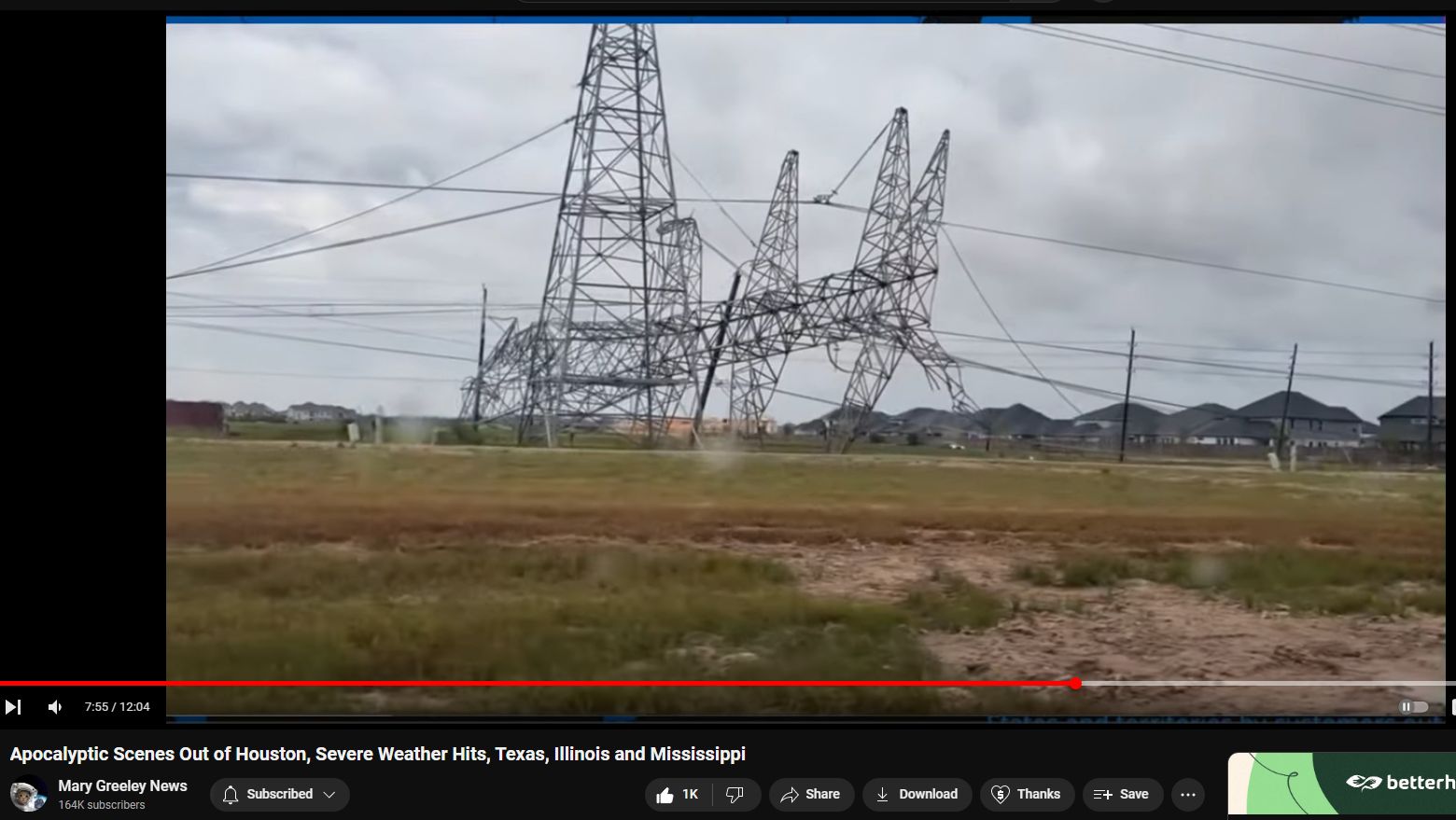
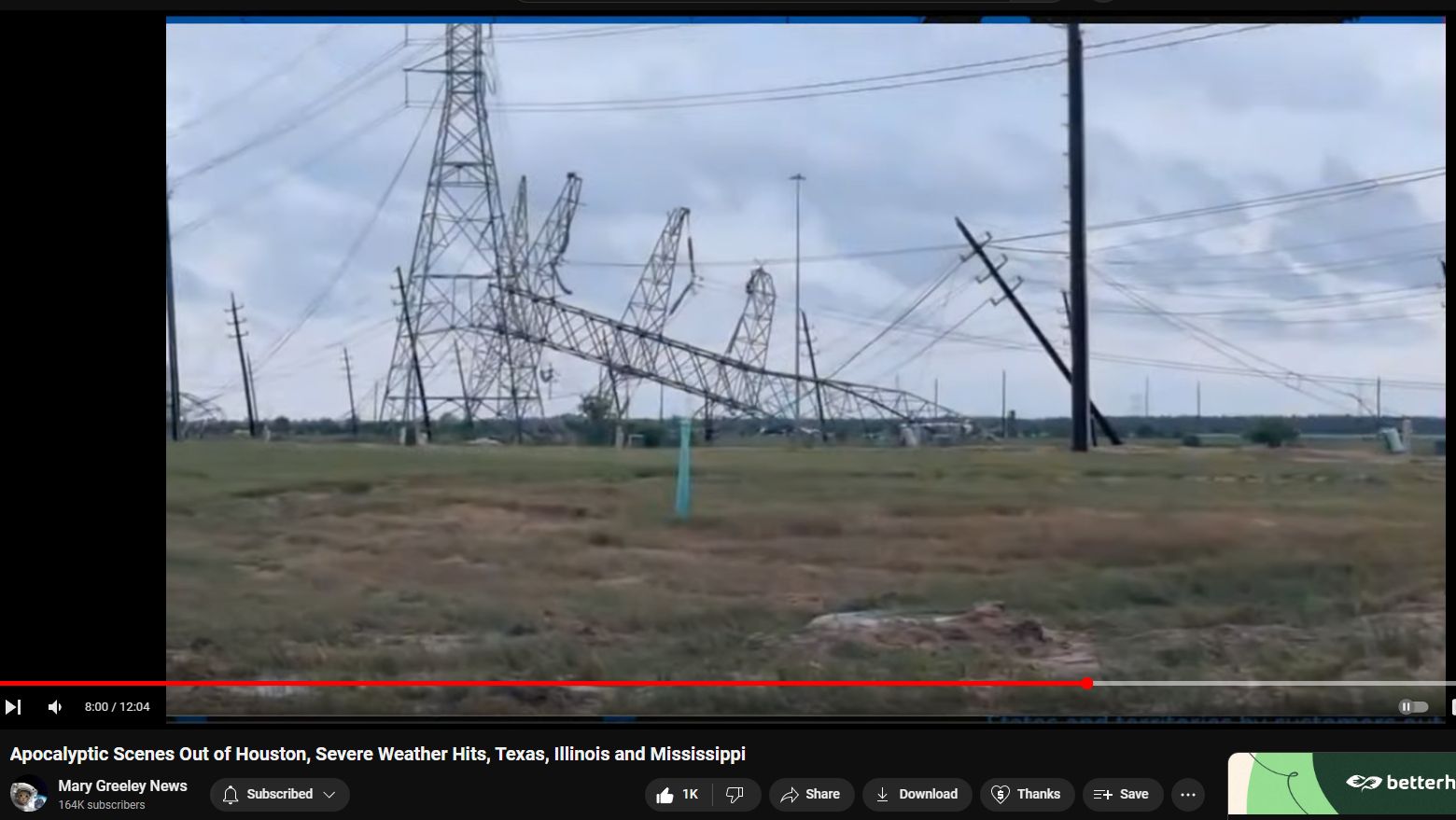
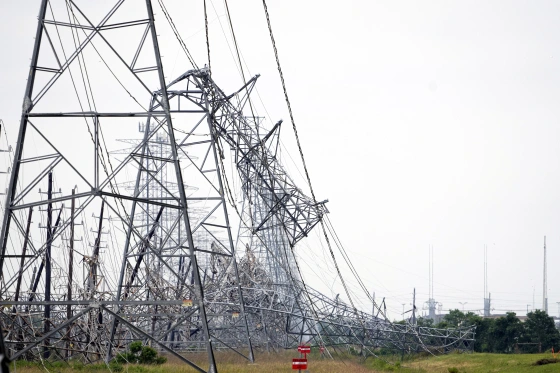
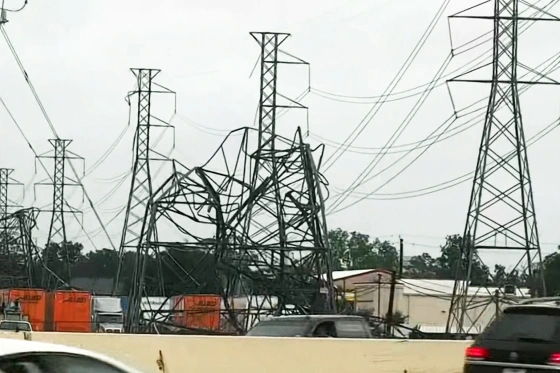
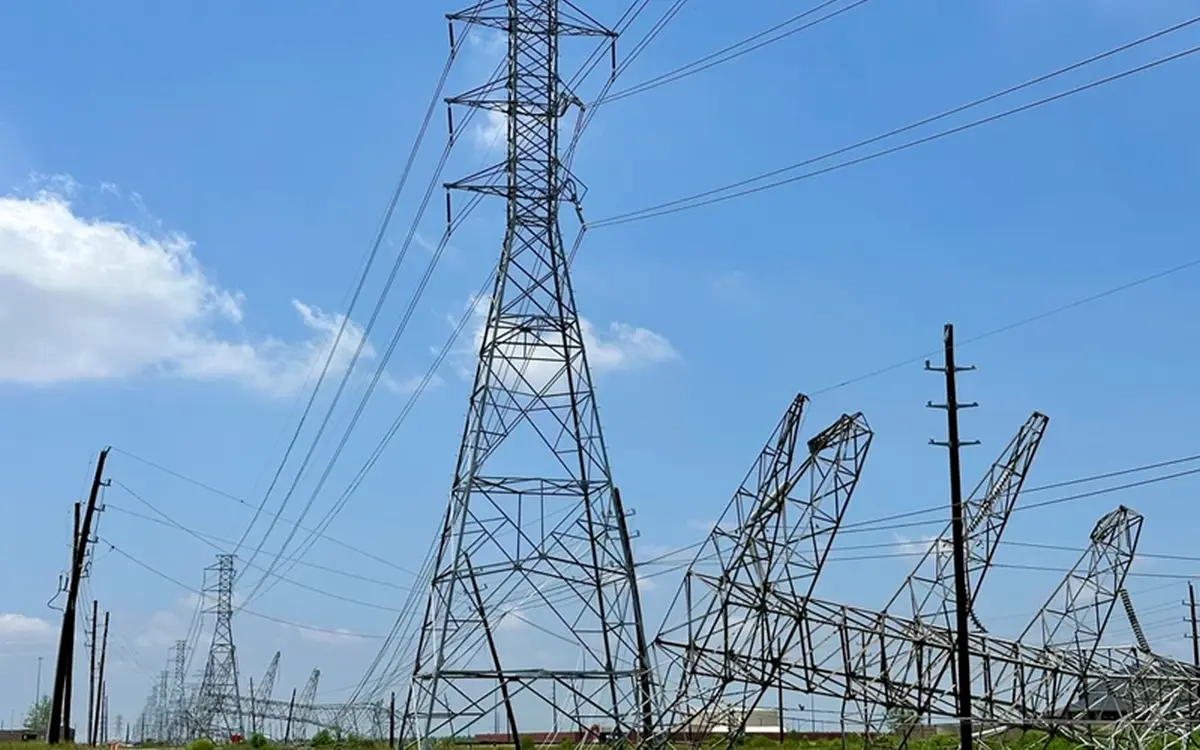
ABOVE: Melted steel girders is not “wind damage”. The steel was superheated within moments by Directed Energy Weapons. Wire weight and tension did the rest.

BELOW: The molten, wilted (from superheating by Blast-Furnace or DEW) steel girders strongly resemble many of those found after the DEW Attack on Baltimore’s Francis Scott Key Bridge. The image is from part #80.
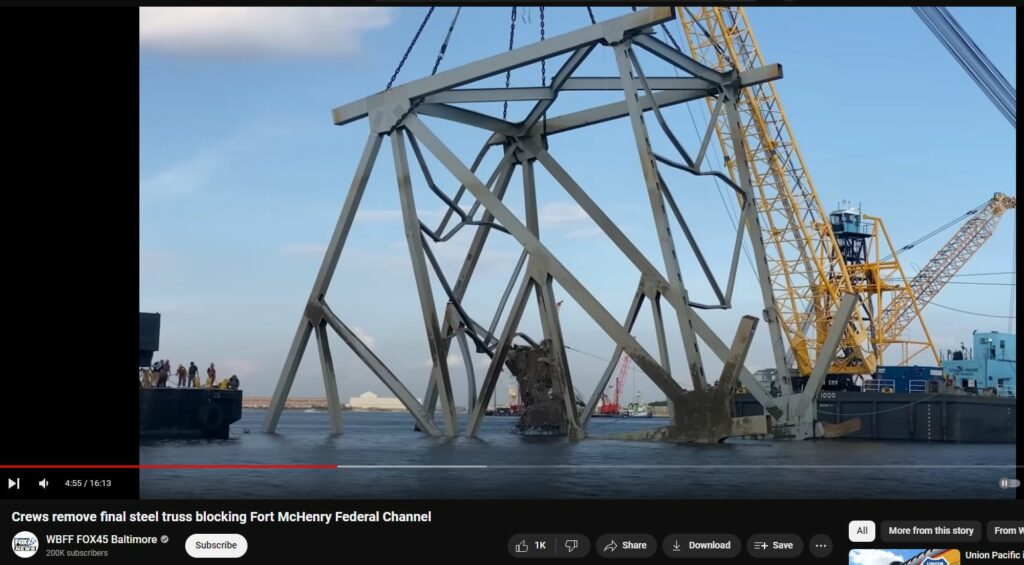
Re-evaluating the Melted, Wilted, and Warped Power Tower Pylons in Houston’s Recent Derecho: A Case for Directed Energy Weapons
In the wake of Houston’s recent derecho, many were left puzzled by the sight of melted, wilted, and warped power tower pylons. Initially attributed to the high winds and severe weather, a closer examination suggests an alternative and more sinister explanation: directed energy weapons (DEWs). By exploring the potential use of DEWs in superheating steel support towers, causing them to melt and deform, we can better understand the possible implications of weather warfare and the intentional targeting of critical infrastructure.
The Phenomenon: Derecho and Power Tower Damage
A derecho is a widespread, long-lived wind storm associated with a band of rapidly moving showers or thunderstorms. Houston’s recent encounter with such a storm resulted in extensive damage to the city’s infrastructure. However, the specific nature of the damage to power tower pylons—melted and deformed steel—raises questions about the official narrative of wind-induced destruction.
Directed Energy Weapons: An Overlooked Factor?
Directed energy weapons, capable of emitting highly focused energy in the form of lasers, microwaves, or particle beams, have been in development for decades. These technologies can generate intense heat, enough to melt and warp metal structures. The hypothesis that DEWs could have been used to superheat the steel support towers during the derecho aligns with the observed damage, which includes:
– Melted Steel Girders: Steel requires temperatures of around 2,500°F (1,370°C) to melt. The presence of melted sections suggests exposure to extreme heat, unlikely to be caused by high winds alone.
– Deformed Structures: The combination of intense heat and high-wind loading could explain the wilted and warped appearance of the pylons.
Weather Warfare: A Hidden Threat?
Weather warfare involves manipulating weather conditions to cause intentional harm or disruption. The use of DEWs in conjunction with natural weather events, such as a derecho, could amplify the destructive power of these events, turning them into strategic attacks on infrastructure. This form of warfare leverages the following:
– Infrared and Microwave Technologies: Capable of superheating targeted areas.
– Electromagnetic Pulse (EMP) Effects: Potentially disabling electronic systems and causing secondary damage.
Infrastructure Attack and Disaster Capitalism
The intentional targeting of critical infrastructure can have far-reaching consequences, creating opportunities for disaster capitalism—a system where private companies profit from disaster recovery and reconstruction efforts. By crippling essential services and facilities, these attacks can:
– Disrupt Supply Chains: Leading to shortages and economic instability.
– Increase Reliance on Private Contractors: For rebuilding efforts, often at inflated costs.
– Shift Public Perception: Toward accepting more intrusive security measures and increased government control.
Historical Context and Current Capabilities
Directed energy weapons and weather manipulation technologies are not new concepts. Historical accounts and declassified documents reveal long-standing research and development in these areas. Today, the capabilities of such technologies have reached a level where their deployment in strategic attacks is feasible and potentially undetectable by conventional means.
Conclusion: A Call for Vigilance
As we re-evaluate the damage to Houston’s power tower pylons, it is crucial to consider the broader implications of directed energy weapons and weather warfare. Understanding the potential for such attacks on critical infrastructure highlights the need for increased vigilance and preparedness. Recognizing the signs of these advanced technologies in action can help us better protect our communities and mitigate the risks associated with disaster capitalism.
By acknowledging the existence and potential use of these capabilities, we can begin to develop more effective countermeasures and ensure a more resilient infrastructure in the face of emerging threats. One such threat is that of the globalist “New World Order” gang which is based in some part at the Vatican and intent upon destruction of nations and formation of one-world dictatorship.
Unusual Steel Deformation in Houston’s Derecho: A Case for Directed Energy Weapons
In the aftermath of Houston’s recent derecho, the striking images of melted, wilted, and radically bent power tower pylons have sparked intense debate. Structural steel, known for its strength and durability, typically cracks, snaps, or shatters under unusual loads rather than permanently deforming or bending without any cracking or splitting. This anomaly suggests an alternative cause: the melting and softening of the steel due to superheating by directed energy weapons (DEWs).
Structural Steel Behavior Under Stress
Structural steel is designed to withstand significant loads, but its behavior under stress follows predictable patterns:
– Cracking and Snapping: Under high stress, steel will develop cracks and eventually snap due to brittle fracture, especially in cold temperatures or when subjected to sudden impacts.
– Shattering: In extreme conditions, such as high-velocity impacts or explosive forces, steel can shatter into pieces.
– Limited Permanent Deformation: Bending or permanent deformation of steel typically involves gradual yielding under prolonged loads, accompanied by visible signs of stress like cracks or splits.
The radical bends observed in Houston’s power tower pylons, without the usual signs of cracking or splitting, indicate an unusual mode of deformation, likely caused by superheating.
Superheating Steel with Directed Energy Weapons
Directed energy weapons, utilizing focused microwave energies, can induce eddy currents within the steel structures, leading to intense localized heating:
– Eddy Currents: Microwave beams induce circulating electric currents within the steel, generating heat through electrical resistance.
– Superheating: The localized heating can raise the steel’s temperature to its melting point, around 2,500°F (1,370°C), causing it to soften and deform under its own weight or external loads like high winds.
– Exotic Beam Weaponry: Advanced DEWs can precisely target and heat specific sections of the steel, resulting in the observed radical bends without the usual structural failures.
Historical Context: The Star Wars Program
The technology behind directed energy weapons dates back to the Strategic Defense Initiative (SDI), commonly known as “Star Wars,” introduced by President Ronald Reagan in 1983. The SDI aimed to develop missile defense systems capable of intercepting and destroying ballistic missiles through advanced technologies, including DEWs.
Key Players in Directed Energy Weapon Development
Several major military contractors have been instrumental in developing directed energy technologies over the past decades:
– Raytheon: A leader in advanced defense technologies, Raytheon has developed various DEWs, including high-energy lasers and microwave weapons.
– BAE Systems: Specializing in electronic warfare and advanced weaponry, BAE Systems has contributed significantly to DEW research and development.
– Lockheed Martin: Known for its cutting-edge aerospace and defense innovations, Lockheed Martin has developed DEW systems for both missile defense and offensive capabilities.
Implications for Infrastructure and Security
The potential use of directed energy weapons to target critical infrastructure poses significant security challenges:
– Infrastructure Vulnerability: The ability to superheat and deform structural steel highlights the vulnerability of essential infrastructure to advanced attacks.
– Disaster Capitalism: Such attacks create opportunities for disaster capitalism, where private entities profit from the destruction and subsequent rebuilding efforts.
– Need for Vigilance: Recognizing the signs of DEW attacks is crucial for developing effective countermeasures and ensuring infrastructure resilience.
Conclusion: Addressing the Threat of Directed Energy Weapons
The unusual deformation of Houston’s power tower pylons calls for a re-evaluation of the official narrative and consideration of directed energy weapons as a possible cause. Understanding the capabilities of DEWs and their potential applications in infrastructure attacks is essential for enhancing security and preparedness. By acknowledging the role of advanced military technologies and their development by major defense contractors, we can better protect our communities and critical infrastructure from emerging threats.
The DEWs induce eddy currents which cause the superheating; the superheating causes oxidation which causes the “insta-rust”. You can be certain these warped, wilted, melted pylons have “impossibly” insta-rusted steel…impossible unless DEW is considered as primary factory in causing the weaponized melting of the steel. Steel cracks and shatters, it does not melt and wilt like hot taffy, unless it is superheated by DEWs or a blast furnace.